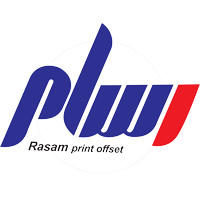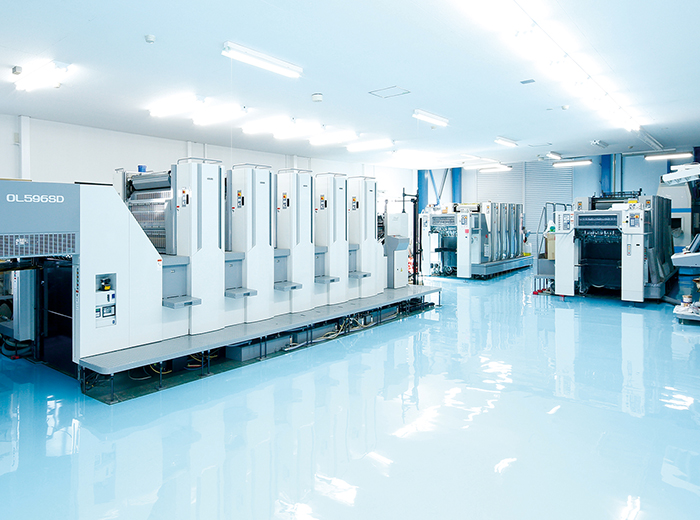?What is offset printing and how does it work

What Is Offset Printing and How Does It Work?
Offset printing, sometimes referred to as offset lithography, is a modern and widely used printing method in which images and text are transferred onto paper through a series of metal and rubber cylinders or plates. This process is highly efficient, accurate, and almost always controlled via computer systems. In this article from Rasam Printing and Packaging Complex, we’ll explore how this printing method works in detail.
فهرست مطالب
ToggleWhat Is Offset Printing?
The term offset comes from the fact that ink does not directly contact the paper. Instead, the image or text is first transferred from a metal plate to a rubber blanket, and only then onto the paper. This intermediate step significantly improves precision, uniformity, and overall print quality.
How Offset Printing Machines Work
Efficiency and accuracy are the core principles behind offset printing machinery. First, a designer creates the layout, and then the machine replicates it precisely on a large number of pages or packaging materials.
Modern offset printers are far more advanced than early models. In the past, typesetters had to manually place each character, but today, the entire process is automated and digitally controlled.
How Does the Offset Printing Process Work?
The ink is first applied to a metal cylinder, then transferred to a rubber cylinder (blanket), and finally to the paper. This process typically occurs in four stages, representing the four base colors of the CMYK color model. In each step, a new color layer is added to form the final image.
In modern systems, digital files are etched directly onto metal plates without traditional chemical processes, saving both time and cost.
Color Range
The four primary colors used in offset printing are:
-
Cyan
-
Magenta
-
Yellow
-
Key/Black
This model is known as CMYK. For accurate color matching before printing, the Pantone Matching System (PMS) is often used.
Paper and Printing Media
Offset printing supports a wide range of paper types—from glossy coated papers to thick cardstocks or industrial rolls used for packaging. The choice of paper depends on the type of project and its intended purpose.
Advantages and Disadvantages of Offset Printing
Advantages:
-
High image quality and color accuracy
-
Cost-effective for large print volumes
-
Compatible with various paper, cardboard, and plastic materials
-
High-speed output after initial setup
Disadvantages:
-
High upfront cost for plate and setup
-
Time-consuming preparation compared to digital printing
-
Not economical for low-volume jobs
Offset Printing vs. Digital Printing
| Feature | Offset Printing | Digital Printing |
|---|---|---|
| Ideal Print Volume | High | Low to Medium |
| Initial Cost | High (plate making, setup) | Low |
| Color Accuracy | Very High | Good |
| Print Speed | Fast after setup | Fast for small jobs |
| Personalization | Not available | Easily available |
Digital printing is ideal for urgent or low-volume orders, while offset printing is the preferred choice for high-volume jobs requiring superior quality.
Common Applications of Offset Printing
Offset printing is widely used in various industries for:
-
Magazines, books, and newspapers
-
Brochures and catalogs
-
Packaging for food, cosmetics, and pharmaceuticals
-
Labels, boxes, cartons, and cardboard prints
-
Brand logos and special color printing
-
Industrial-grade export packaging
How to Choose the Right Offset Printing Company
If you’re looking for a professional printing partner, consider the following:
-
Experience and portfolio: Check the printer’s track record
-
Printing equipment: Preferably modern 4 or 6-color machines
-
Pre-press services: Design consultation and color proofing
-
Transparent pricing
-
Reliable delivery times
Final Words
If you’re looking for high-quality, cost-effective, and professional printing, offset printing is your best option. At Rasam Printing and Packaging Industries, we’re equipped with modern machinery and a skilled team to deliver exceptional print services. For personalized advice, feel free to contact our consultants.
Frequently Asked Questions About Offset Printing (FAQ)
What exactly is offset printing?
Offset printing is an industrial printing method where the image is first transferred from a metal plate to a rubber blanket and then onto paper or other surfaces. This ensures excellent accuracy, speed, and uniformity.
What applications is this printing method best suited for?
Offset printing is ideal for high-volume jobs such as magazines, catalogs, packaging, labels, books, and promotional boxes. It’s especially cost-effective when large quantities and precise color quality are needed.
How is offset printing different from digital printing?
Offset is more suitable for high-volume, high-precision jobs and requires setup costs. Digital printing, on the other hand, is better for small runs, fast delivery, and personalized prints.
Can offset printing be done on any type of paper?
Yes, offset printing can be used on a wide range of materials, including coated paper, uncoated paper, cardboard, gloss, and even plastics and films. The machine must be adjusted accordingly to achieve optimal results.
Why is black represented as “K” in CMYK?
“K” stands for “Key” and is used instead of “B” to avoid confusion with “Blue.” It refers to the key plate that adds depth and contrast to the print.
Can metallic or special colors like gold or silver be printed using offset?
Yes, by adding custom inks or metallic finishes, offset printing can produce special colors such as gold, silver, or Pantone shades.
How can I know if offset printing is right for my project?
If your job requires high quality, large volume, and cost efficiency at scale, offset printing is the best choice. For smaller quantities, quicker turnaround, or personalized materials, digital printing might be more suitable.








